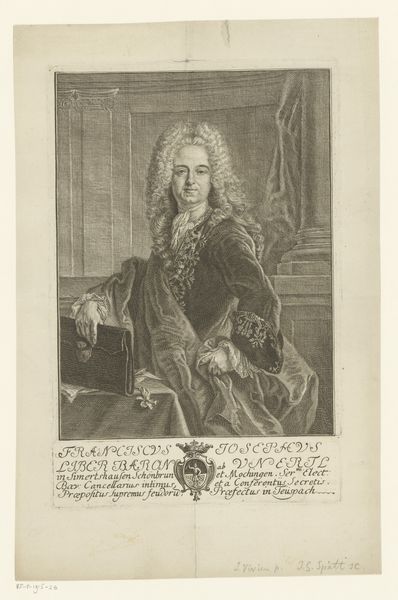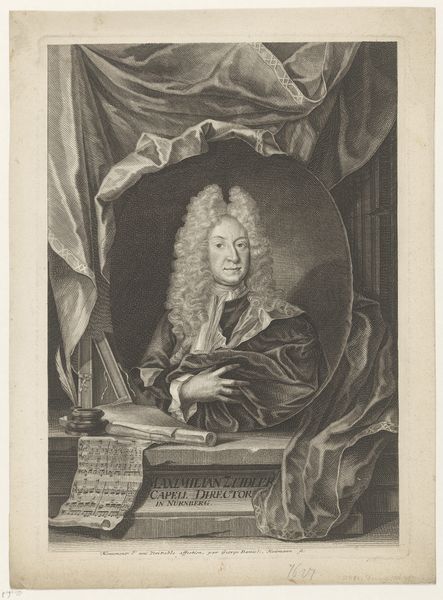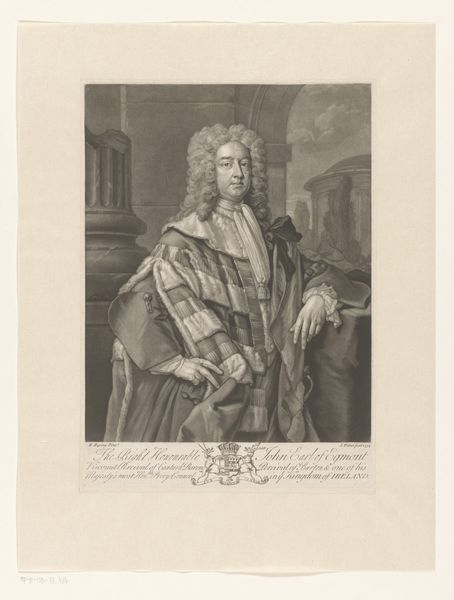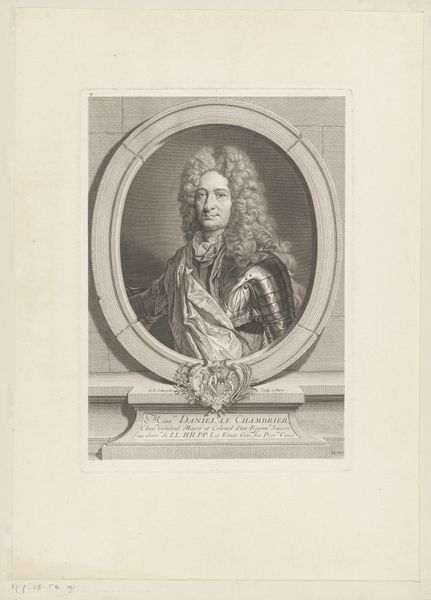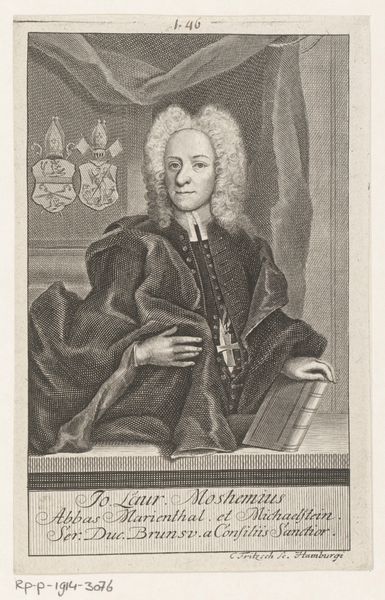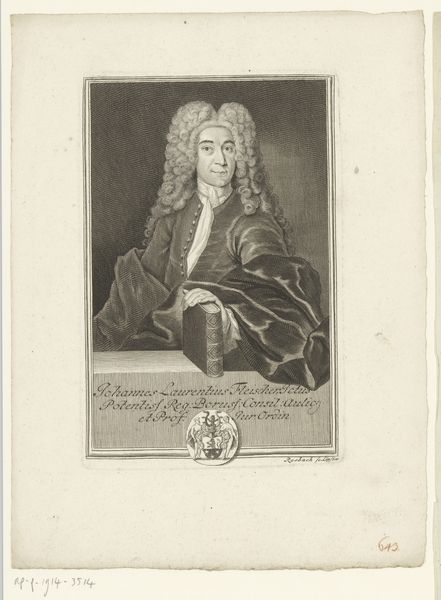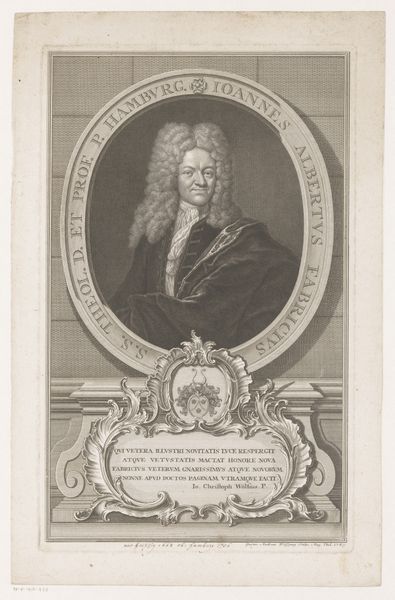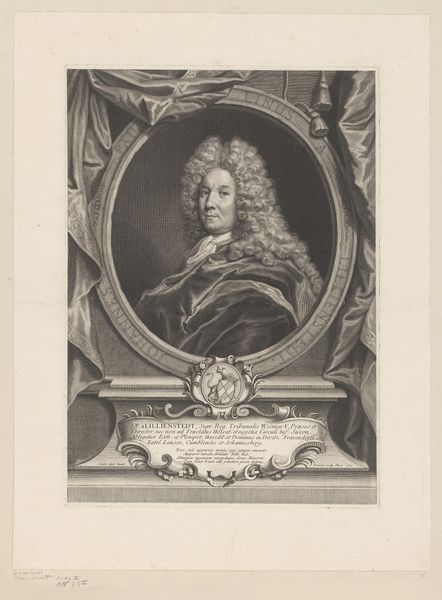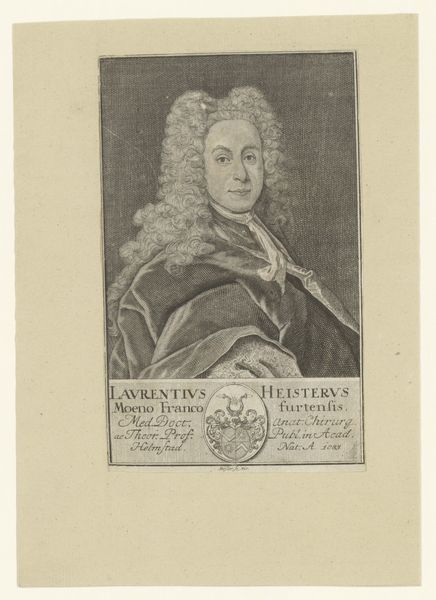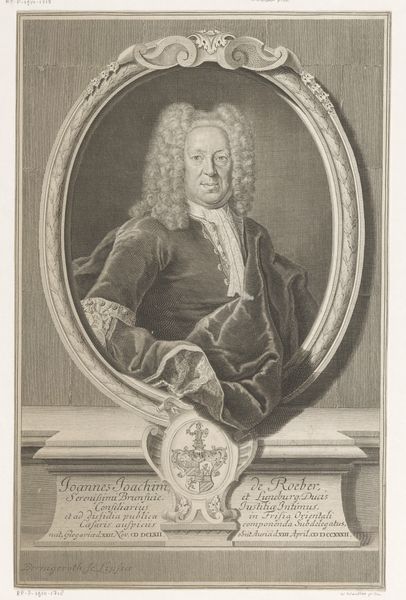
print, engraving
#
portrait
#
baroque
# print
#
old engraving style
#
figuration
#
line
#
engraving
Dimensions: height 262 mm, width 170 mm
Copyright: Rijks Museum: Open Domain
Editor: Here we have a print entitled "Portret van Franz Joseph Unertl," created sometime between 1696 and 1735 by Franz Xaver Joseph Späth. It’s an engraving, a delicate network of lines. I find the composition rather striking with its emphasis on the texture of fabrics and hair. What compositional elements stand out to you? Curator: The density of lines is, indeed, a critical feature, particularly as it affects the representation of light and shadow. Observe how Späth uses hatching and cross-hatching, a baroque strategy to modulate tones and render a rich material surface through purely linear means. It transcends simple representation and engages with philosophical concepts around visibility itself. Editor: So it’s not just about depicting a person, but about exploring light and form through technique? Curator: Precisely. Consider, also, the strategic use of the blank spaces, the untouched paper. These function not as absences but as active elements defining the contours, creating a visual rhythm in juxtaposition to the denser, worked areas. Note how that balance influences your reading of depth in the piece. Editor: I see what you mean. The negative space shapes the figure just as much as the engraved lines do. I hadn't considered the blank paper as an active choice before. Curator: How does it alter your impression of the subject now that you consider figure and ground so meticulously balanced through a structural semiotic lens? Editor: It adds a certain dynamism and lightness, despite the formality of the portrait. Thank you for pointing that out.
Comments
No comments
Be the first to comment and join the conversation on the ultimate creative platform.
